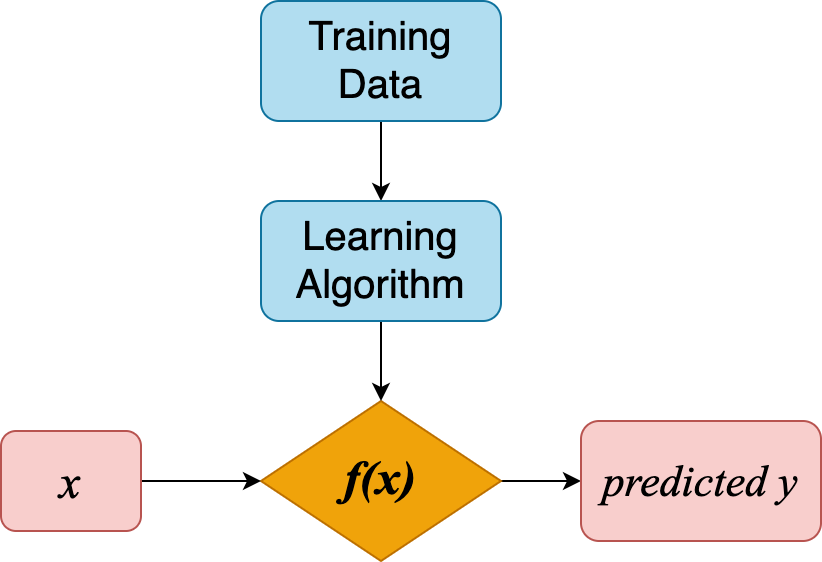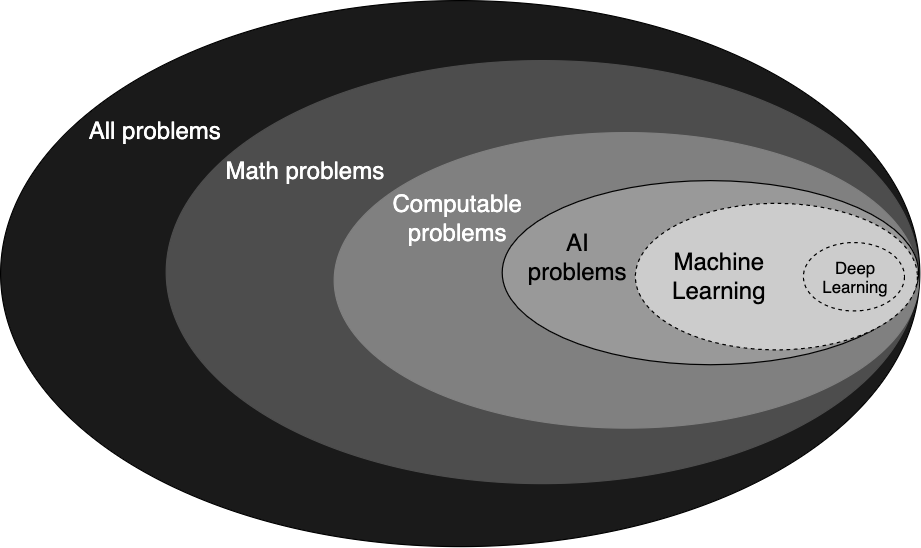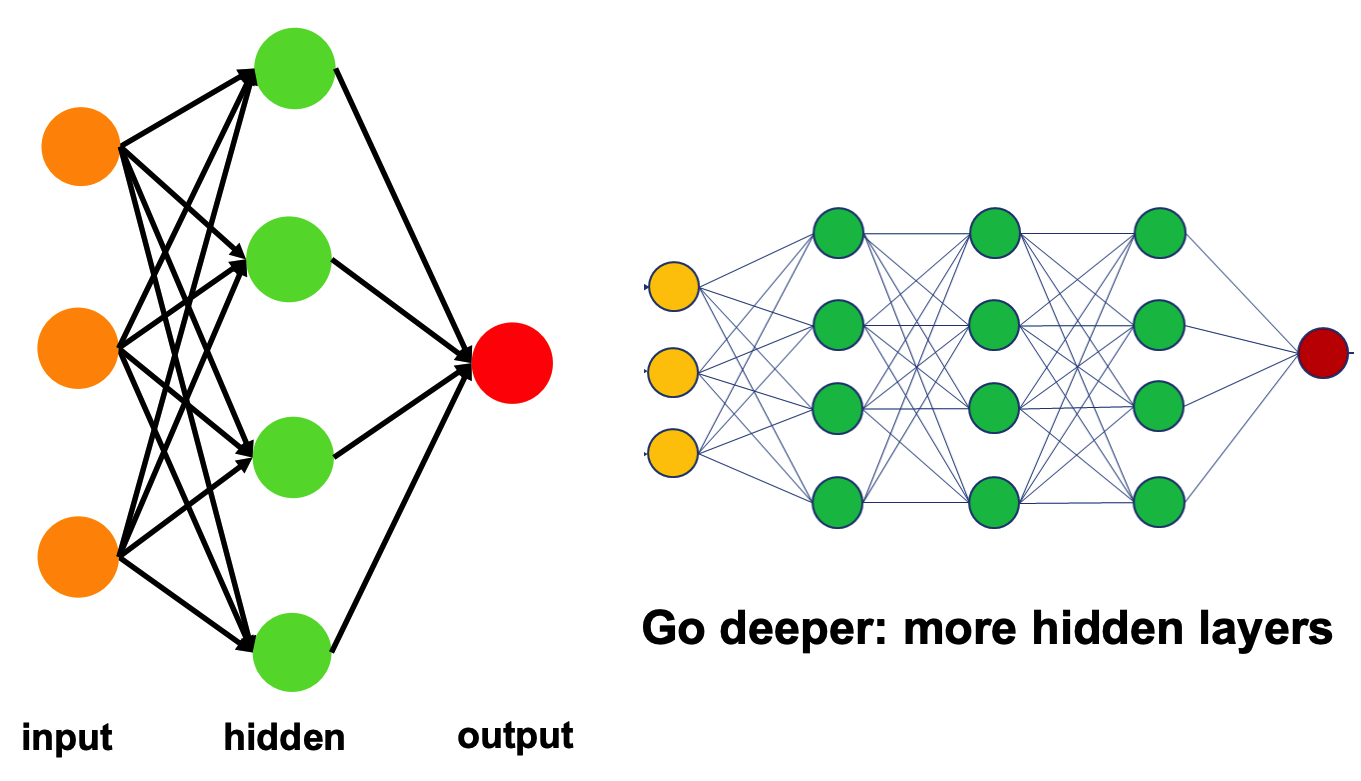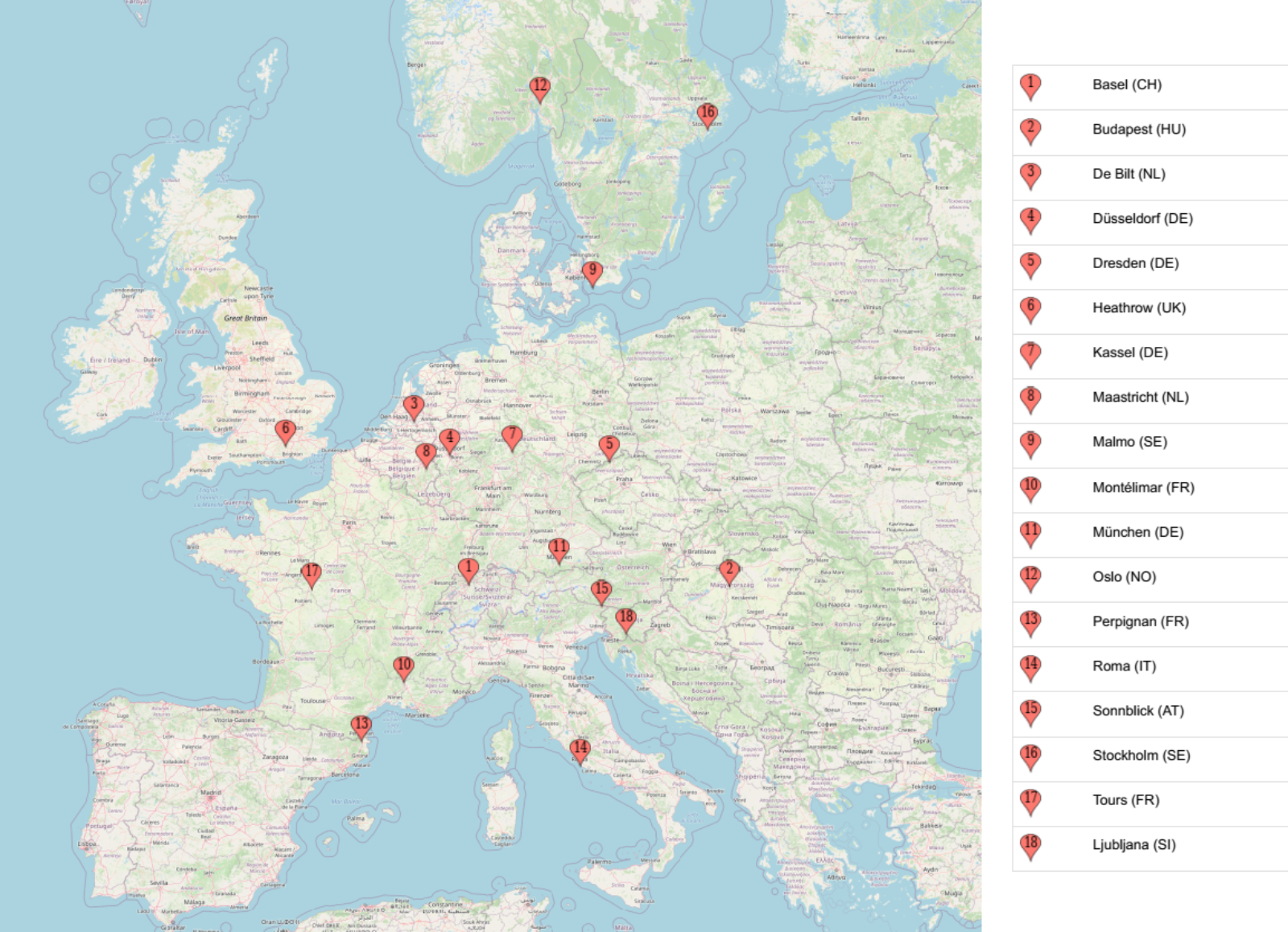Introduction to machine learning
What is machine learning?
The field of study that gives computers the ability to learn without being explicitly programmed.
A computer program is said to learn from experience E with respect to some class of tasks T and performance measure P, if its performance at tasks in T, as measured by P, improves with experience E.
Experience E, Task T, Performance P
- predicting house price:
- E = the historical price of many houses
- T = the task of predicting house price
- P = the performance is how exactly the program predict the house price
- playing Go:
- E = the experience of playing many games of Go
- T = the task of playing Go
- P = the probability that the program will win the next Go
The mathematical perspective

ML objective is the function: \[ \hat{y} = f(x) \]
ML & AI


ML & statistics
ML & Statistics
- Closely related: methods
- Different: goal
- Statistics draws population inferences from a sample
- ML finds generalizable predictive patterns
ML Types
Three main types of ML problems
- Supervised learning
- Unsupervised learning
- Reinforcement learning
Supervised learning
To learn a mapping between input examples and the target variable.
The training data has the target variable.
Supervised learning: Classification
Target variable is discrete, belonging to two or more classes
e.g. handwritten digit recognition
Supervised learning: Regression
Target variable is continuous real value
e.g. predicting length of a salmon
Unsupervised learning
To describe or extract relationships in data
Training data does not have values of target variable
Unsupervised learning problems
- clustering: to discover groups of similar examples within the data
- density estimation: to determine the distribution of data within the input space
- dimensionality reduction: to project the data from a high-dimensional space down to two or three dimensions
- …
Reinforcement learning
An agent operates in an environment and must learn to operate using feedback.
No fixed training data
e.g. Google’s AlphaGo
ML Limitations
Data
ML requires massive data to train on
Data should be unbiased and of good quality
Not easy to get in practice
Extrapolation
We can only make reliable predictions about data which is in the same range as our training data.
If we try to extrapolate beyond what was covered in the training data we’ll probably get wrong answers.
Interpretation of Results
It’s a challenge to accurately interpret results generated by the algorithms.
You have to carefully choose the algorithms for your purpose.
Todays data
Weather data set

- 18 locations
- cloud_cover, wind_speed, wind_gust, humidity, pressure, global_radiation, precipitation, sunshine